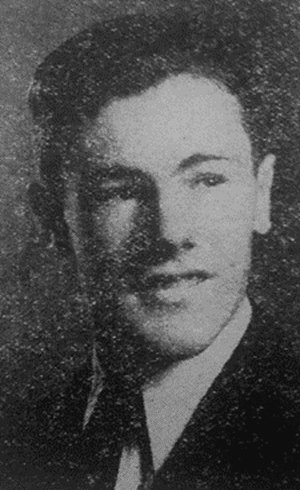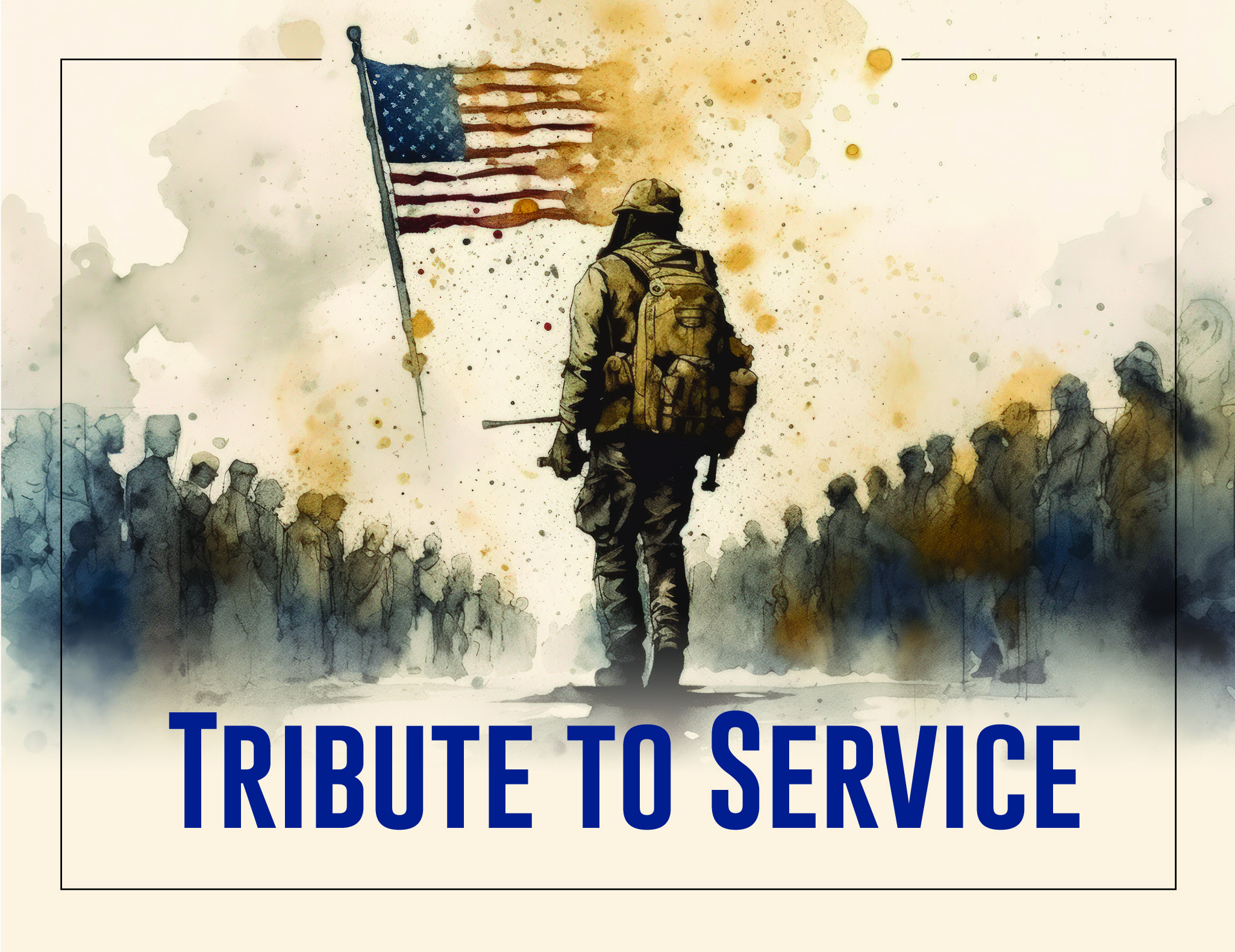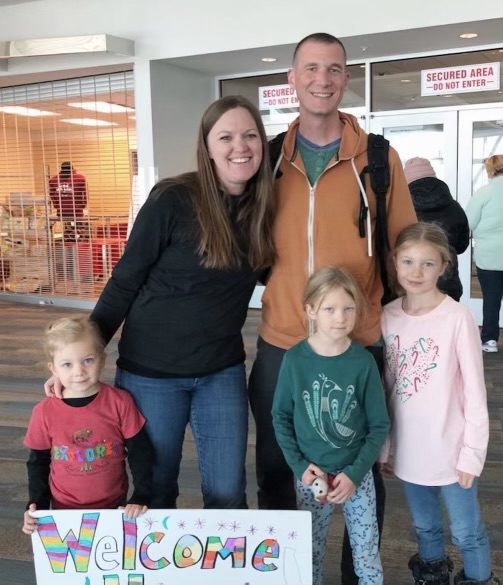Walter Parcells. Parcells was the son of Mr. and Mrs. Louis Parcells born in 1922 and spent his youth at Oberon, until the family moved, ending up at Kingston, Washington. Parcells’ father, a Benson Co. native, served in the United States Army during World War I. Walter was quick to enlist in the Army Air Corps, doing so December 23, 1941, as he had given his 2 week notice at the newspaper where he worked as a printer on December 8, 1941.
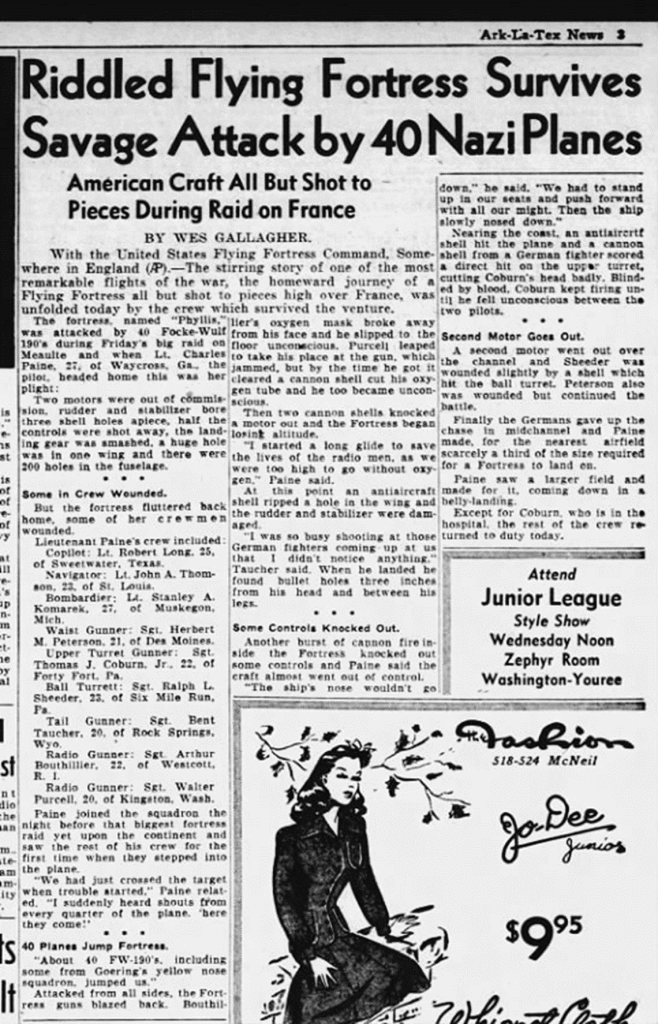
Parcells was quickly trained and by summer of August 1942 was in England as a radio gunner with a bomber crew, 352nd Bomb Squadron, 301st Bomb Group, 8th Air Force. His first close brush with death was aboard “Phyllis,” a B-17 flying out of England.
There are miracles and THERE ARE MIRACLES! World War II had its share of hard-to-believe stories, but none can surpass the story filed by AP correspondent Wes Gallagher about a B-17 Flying Fortress “Phyllis” and her crew. What begin as an ordinary routine flight became a story of one of the most remarkable fights of the war, the homeward journey of a Flying Fortress all shot to pieces high over France, was unfolded today by the crew that survived the venture. The story that follows are Gallagher’s and appeared in newspapers world-wide served by the Associated Press News Service.
“The fortress named “Phyllis” was attacked by forty Focke-Wulf 190 fighter planes during Friday’s big raid on Maulte, and when Lt. Charles Paine of Waycross, Ga., the pilot, headed home, this was her plight: Two of four motors were out of Commission, rudder and stabilizer bore three holes a piece, half of the controls were shot away, the landing gear was smashed, there was a huge hole in one wing and there were 200 bullet holes in the fuselage.
Despite the severe damage to Phyllis, the plane fluttered back home, some of her crewmen wounded.
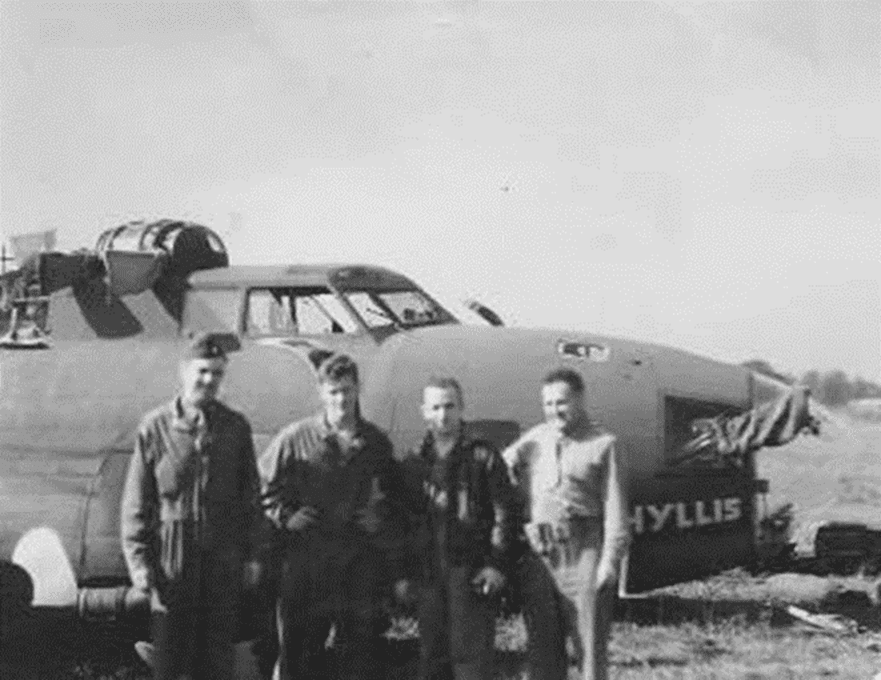
Lt. Paine’s crew included: Co-Pilot: Lt. Robert Long; Navigator: Lt. John Thompson; Bombardier: Lt Stanley A. Komarek; Waist gunner: Sgt Herbert M Peterson; Upper turret gunner: Sgt Thomas J Coburn, Junior; Ball turret: Sgt Ralph L. Sheeder; Tail Gunner: Sgt. Bent Taucher; Radio Gunner: Sgt. Arthur Bouthillier; Radio Gunner: Sgt. Walter Parcells.
Paine joined the squadron the night before the biggest fortress raid yet upon the continent and saw the rest of his crew for the first time when they stepped into the plane. “We’re just crossed the target when trouble started,” Paine related, “I suddenly heard shouts from every quarter of the plane, “here they come.” About 40 fighters, including some of Goering’s yellow nose squadron jumped us and attacked from all sides, the fortress guns blazed back. Bouthillier’s oxygen mask broke away from his face as he slipped to the floor unconscious.
Parcells leaped to take his place at the gun, which jammed, but by the time he got it cleared a cannon shot cut his oxygen tube and he too became unconscious. Then two cannon shells knocked motor out and the fortress began losing altitude. At this point an antiaircraft shell ripped a hole in the wing and the rudder and stabilizer were damaged. “I was busy shooting at those German fighters coming up at us I didn’t notice anything,” Taucher said.
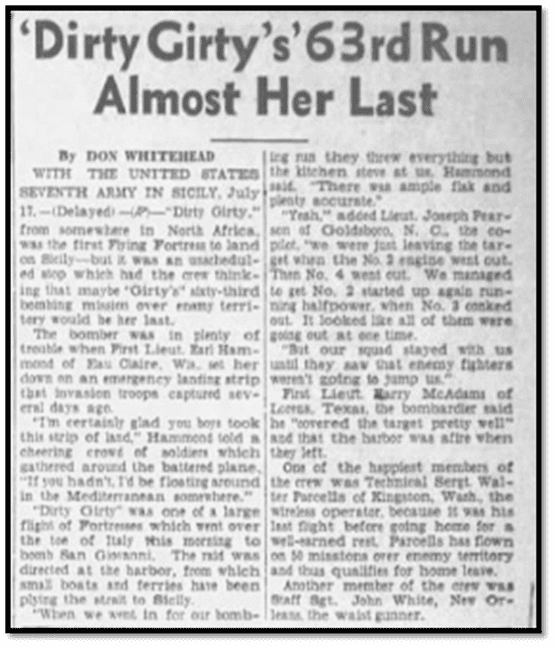
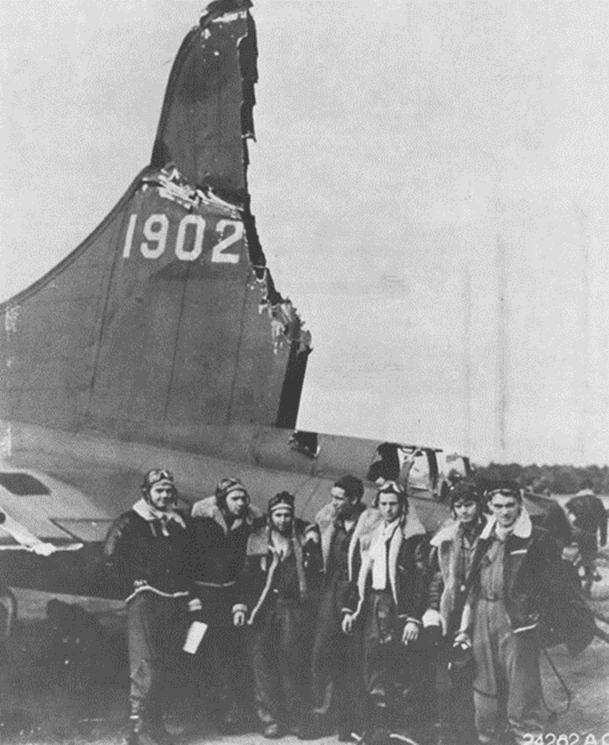
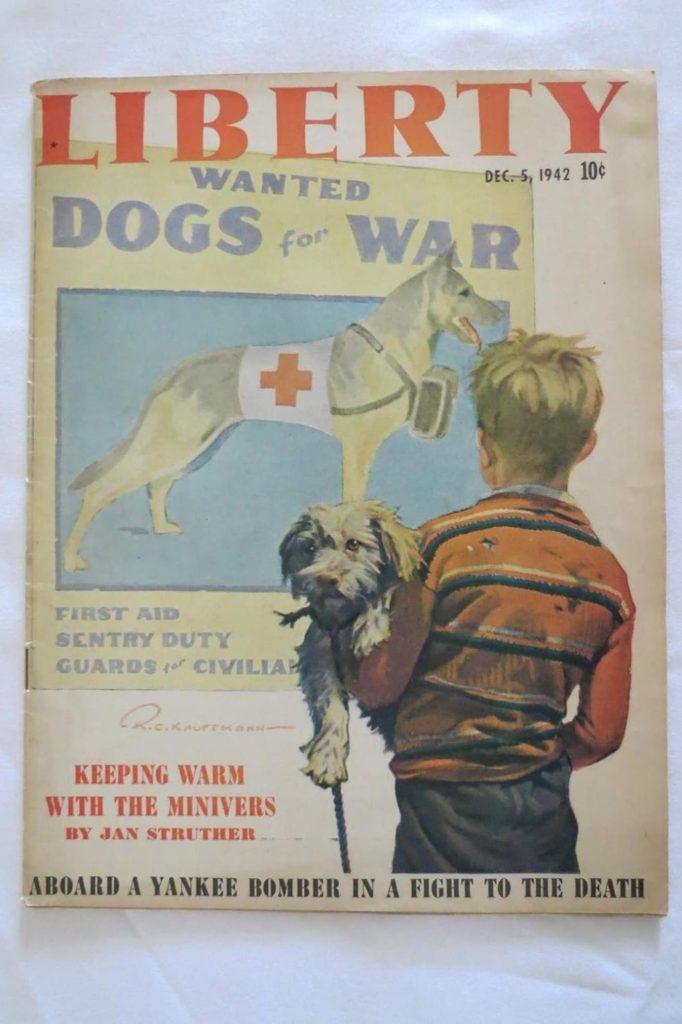
When he landed, he found three bullet holes three inches from his head and between his legs. another burst of cannon fire inside the fortress knocked out some controls and Payne said the aircraft almost went out of control. The ship’s nose wouldn’t go down, he said, we had to stand up in our seats and pushed forward with all our might then the ship slowly nosed down. Nearing the coast an anti-aircraft shell hit the plane and a cannon shell from a German fighter scored a direct hit on the upper turret cutting Coburn’s head badly. Blinded by blood. Coburn kept firing until he fell unconscious between the two pilots.
The second motor went out over the channel and Sheeder was wounded slightly by a shell which hit the ball turret. Peterson also was wounded but continued to battle finally the Germans gave up the chase in mid-channel and Paine made for the nearest airfields scarcely 1/3 of the size required for the fortress to land on. Paine saw a larger field and made for it, coming down in a belly landing. Except for Colburn, who is in the hospital, the rest of the crew returned to duty today.”
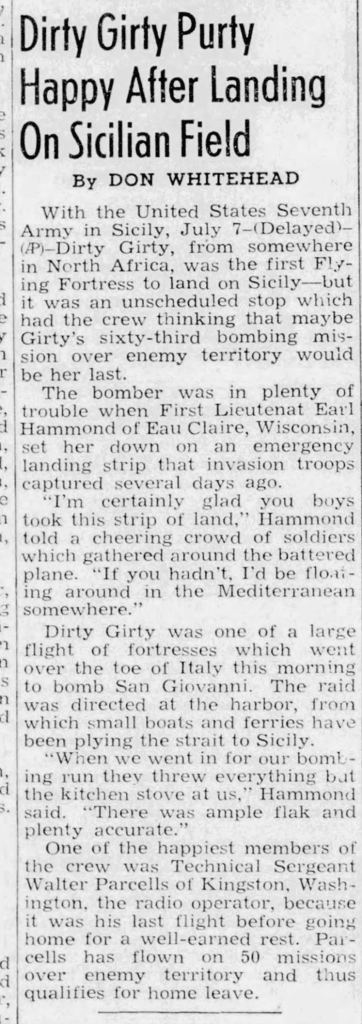
Only 8 months after his close call on “Phyllis,” Parcells was radio gunner on a crew taking part in the North African campaign. By now he had 49 missions under his belt, and this was to be his final one, number 50. He could go home on leave after this one. It was the invasion of Sicily, Operation Husky. The B-17’s had been bombing German airfields in the boot of Italy and their mission was San Giovanni and small ships in the harbor. Only hours earlier the landing forces had captured the runway.
“Dirty Girty” was hit by heavy fire and forced to make an emergency landing. She became the first Allied plane to land in Sicily.
Capt. Hammond was a young but skillful pilot. He not only brought Dirty Girty safely down with no injuries to the crew, but he went on to complete 50 missions himself with the enviable record of never losing a crew member.
Syndicated story, nationwide release, July, 1943
Glenn Parcells was by now a Tech Sgt., had flown 50 missions, survived two missions which made national news coverage, and wasn’t yet 21 years old. He had earned the Air Medal and Oak Leaf Cluster. It was time to go home to Washington on leave.
After the war Parcells returned to Washington state and resumed his career as a newspaper printer. He passed away in 2009 in Washington state.
**Research uncovered since this story was written in 2019: In October, 1943 Parcells was a patient at a Veteran’s Hospital in Texas. He was diagnosed with epilepsy and honorably discharged November, 1943.
The story mentioned at the bottom of the magazine cover was the full after the event story chronicled to war correspondent Don Whitehead by the crew of the “Phyllis”

